BLOGS BY:
Defrazzle Me
Exhausted and then some...

Related to Stress Management and Tips
Introduction:
One of my most favourite fictional reads is Patrick Suskind’s classic, Perfume – the story of a child born with a sublime sense of smell in 18th century France. While a fairly haunting story line the author captures the extreme pleasure experiences with smell of objects like freshly cut wood and brass doorknobs. The narrative brilliance is based around a sense we often forget – our olfactory sense or that of smell. The sense of smell is directly interwoven into our sense of taste. The importance of smell and taste is represented in our spoken language:
“She is a rotten person”.
“I like her but I smell a rat.”
“One of my greatest loves is the aroma of coffee.”
For me personally, the smell of freshly cut grass, baking bread, the smell of air just before the rain or rosemary picked from the garden are all so comforting, scientists have found that smell is the sense that is most tied into memory and the sense that has the greatest effect on elevation of mood and alleviating stress.
The term aromatherapy is derived from the Latin aroma, meaning "pleasant scent," and therapy, meaning "treatment." It is essentially a practice of using scents to heal the mind, body, and soul. The olfactory nerve is the only cranial nerve in direct contact with our external environment. Nerve endings inside the nose are in contact with the air you breathe and when they connect with scent molecules they activate messages to the primal parts of your brain that control emotion, pleasure and memory.

The ancient Egyptians and Greeks used essential oils to for a variety of ailments, and according to the history documented by the International Federation of Aromatherapists, early civilizations even used aromatherapy to ward off evil spirits.
However, the practice wasn't given its name until 1937, when French perfumer and chemist René -Maurice Gattefossé published the first-ever book on the topic, titled Aromatherapy, Essential Oils.
The scents commonly used in aromatherapies are sourced from aromatic plants (think flowers, herbs, citrus fruits, etc.) and are used to promote mental and physical health through inhalation alone or topical application on the skin. During inhalation, the molecules that carry the scent in essential oils travel from your nose to the emotional center in your brain. It wasn’t until the 1930s however when Adora Winquist researched the chemical compounds and their corresponding psychological effects.
Peppermint – boosts mental function, lowers stress and relieves nerve pain
Chamomile – muscle relaxation, menstrual pain, inflammation reduction
Lavender – restoration, sleep and calming
Bergamot - reduces stress and fatigue
Sandalwood – anxiety removal
Aromatherapy is made easy to practice in the modern age. All you need is a diffuser or carrier oil and a bottle of your favourite essential oil.
Essential oils are easy to obtain online, or through your local health store. They come in tiny bottles that range from 0.5 millilitres to one ounce each. Just a heads up to grab an organic one and not one that is fabricated.
Inside these bottles are many, many pounds of herbs that have been distilled or pressed to make a small amount of oil.
For example, it takes 22 roses to make five millilitres of essential oil. That’s why, as you may notice through your shopping, essential oils seem rather pricey, but buying 22 roses would be a little pricey as well. You only need a very small amount to make a roll on wrist oil or for a diffuser and the bottle will last a while.
When using essential oils for stress and anxiety, you will realise that you will spend less money on painkillers and medicine. At the end of the day if nothing else you will feel better!

Marianne Edmonds
Licensed Clinical Mental Health Counsellor Specializing In Cognitive Behavioural Therapy & Behaviour Change | Burnout | Resilience | Maladaptive Behaviour | Alcohol - Recovery | Breathwork Coach | Orange Sky Volunteer
Take the first step towards recovery
and book a free consultation with
Defrazzle Me today.
Let's Connect
NAVIGATE
CONTACT US
+61 412 348 141



